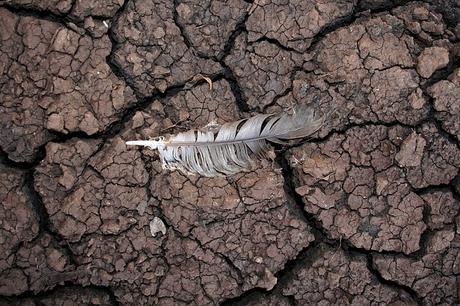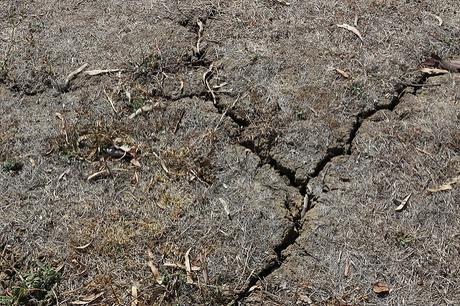What is Soil Erosion?
Soil erosion is, at its core, a natural process. Put simply, it is when topsoil, which is the upper-most layer of the ground, is moved from one spot to another. Why this matters is because topsoil is the part of the land that is highest in organic matter and best suited for farming and other fertile activities, which is why soil erosion can have the greatest impact on farmers and agricultural land. In other words, soil erosion is a naturally occurring and slow process that refers to loss of field’s top soil by water and wind or through conversion of natural vegetation to agricultural land.
When farming activities are carried out, the top soil is exposed and is often blown away by wind or washed away by rain. When soil erosion occurs, the movement of the detached topsoil is typically facilitated by either a natural process – such as wind or water movement – or by the impact of man, such as through tilling farmland.
The process of soil erosion is made up of three parts:
- Detachment: This is when the topsoil is actually “detached” from the rest of the ground.
- Movement: This is when the topsoil is relocated to another area.
- Deposition: Where the topsoil ends up after this process.

According to Wikipedia,
“Soil erosion is one form of soil degradation. Soil erosion is a naturally occurring process on all land. The agents of soil erosion are water and wind, each contributing a significant amount of soil loss each year. Soil erosion may be a slow process that continues relatively unnoticed, or it may occur at an alarming rate causing serious loss of topsoil. The loss of soil from farmland may be reflected in reduced crop production potential, lower surface water quality and damaged drainage networks.”
When it comes to our planet, natural resources are typically affected by two things – either naturally-occurring ones such as weather, or from man-made influence. Soil erosion, or the gradual reduction of topsoil in a geographic area, can be caused by both natural and unnatural processes, but it can also have great effects on inhabitants of an affected area. One of the major concerns regarding soil erosion is that it can permanently affect the land, which can be devastating for farmers or those with agricultural pursuits.
Unfortunately, many people are still uneducated about soil erosion, which is leading to the occurrence in greater amounts around the world. Soil erosion contributes to pollution in adjacent water sources and reduces cropland productivity. Major crops that cause soil erosion include coffee, cotton, tea, tobacco, palm oil, soybean and wheat that can increase soil erosion beyond the soil’s ability to maintain itself.
Causes of Soil Erosion
As mentioned, the predominant causes of soil erosion are either related to naturally-occurring events or influenced by the presence of human activity. Some of the principal causes of soil erosion include:
- Rain and rainwater runoff: In a particular heavy rain, soil erosion is common. First of all, the water starts to break down the soil, dispersing the materials it is made of. Typically, rainwater runoff will impact lighter materials like silt, organic matter, and finer sand particles, but in heavy rainfall, this can also include the larger material components as well.
- Farming: When land is worked through crops or other agricultural processes, it reduces the overall structure of the soil, in addition to reducing the levels of organic matter, making it more susceptible to the effects of rain and water. Tilling in particular, because it often breaks up and softens the structure of soil, can be a major contributor to erosion. Farming practices that reduce this activity tend to have far less issues with soil erosion.
- Slope of the land: The physical characteristics of the land can also contribute to soil erosion. For example, land with a high hill slope will perpetuate the process of rainwater or runoff saturation in the area, particularly due to the faster movement of the water down a slope.
- Lack of vegetation: Plants and crops help maintain the structure of soils, reducing the amount of soil erosion. Areas with less naturally-occurring flora may be a hint that the soil is prone to erosion.
- Wind: Wind can be a major factor in reducing soil quality and promotion erosion, particularly if the soil’s structure has already been loosened up. However, lighter winds will typically not cause too much damage, if any. The most susceptible soil to this type of erosion is sandy or lighter soil that can easily be transported through the air.
Effects of Soil Erosion
A major problem with soil erosion is that there is no telling how quickly or slowly it will occur. If largely impacted by ongoing weather or climate events, it may be a slow-developing process that is never even noticed. However, a severe weather occurrence or other experience can contribute to rapid-moving erosion, which can cause great harm to the area and its inhabitants.
Some of the greatest effects of soil erosion include:
- Loss of topsoil: Obviously, this is the biggest effect of soil erosion. Because topsoil is so fertile, if it is removed, this can cause serious harm to farmer’s crops or the ability to effectively work their land.
- Soil compaction: When soil under the topsoil becomes compacted and stiff, it reduces the ability for water to infiltrate these deeper levels, keeping runoff at greater levels, which increases the risk of more serious erosion.
- Reduced organic and fertile matter: As mentioned, removing topsoil that is heavy with organic matter will reduce the ability for the land to regenerate new flora or crops. When new crops or plants can’t be placed successfully in the area, this perpetuates a cycle of reduced levels of organic nutrients.
- Poor drainage: Sometimes too much compaction with sand can lead to an effective crust that seals in the surface layer, making it even harder for water to pass through to deeper layers. In some ways, this can help erosion because of the densely packed soil, but if it perpetuates greater levels of runoff from rainwater or flooding, it can negatively impact the crucial topsoil.
- Issues with plant reproduction: When soil is eroded in an active cropland, wind in particular makes lighter soil properties such as new seeds and seedlings to be buried or destroyed. This, in turn, impacts future crop production.
- Soil acidity levels: When the structure of the soil becomes compromised, and organic matter is greatly reduced, there is a higher chance of increased soil acidity, which will significantly impact the ability for plants and crops to grow.
- Long term erosion: Unfortunately, if an area is prone to erosion or has a history of it, it becomes even harder to protect it in the future. The process has already reduced the soil structure and organic matter of the area, meaning that it will be harder to recover in the long run.
- Water pollution: A major problem with runoff from soils – particularly those used for agricultural processes – is that there is a greater likelihood that sediment and contamination like the use of fertilizer or pesticide. This can have significant damage on fish and water quality.

Solutions for Soil Erosion
When it comes to finding solutions for soil erosion, the most useful techniques found tend to be those that emphasize reinforcing the structure of the soil, and reducing processes that affect it.
- Careful tilling: Because tilling activity breaks up the structure of soil, doing less tilling with fewer passes will preserve more of the crucial topsoil.
- Crop rotation: Plenty of crop rotation is crucial for keeping land happy and healthy. This allows organic matter to build up, making future plantings more fertile.
- Increased structure for plants: Introducing terraces or other means of stabilizing plant life or even the soil around them can help reduce the chance that the soil loosens and erodes. Boosting areas that are prone to erosion with sturdy plant life can be a great way to stave off future effects.
- Water control: For those areas where soil erosion is predominantly caused by water – whether natural or man-made – specialized chutes and runoff pipes can help to direct these water sources away from the susceptible areas, helping stave off excess erosion. Having these filters in particular areas rather than leading to natural bodies of water is a focus to reduce pollution.
- Increased knowledge: A major factor for preventing soil erosion is educating more and more people who work with the land on why it is a concern, and what they can do to help reduce it. This means outreach to farmers in susceptible areas for ways that they can help protect crops from inclement weather, or ways that they can help make sure their soil remains compact without restricting their plant growing activities.

